If you’re traveling to Japan, the Japan Rail Pass can be a huge money saver. But with the updated JR Pass price, it might not be worthwhile. We’ll explain exactly when you should purchase the JR Pass and if it makes sense for your route. This is everything you need to know including where to buy the rail pass.
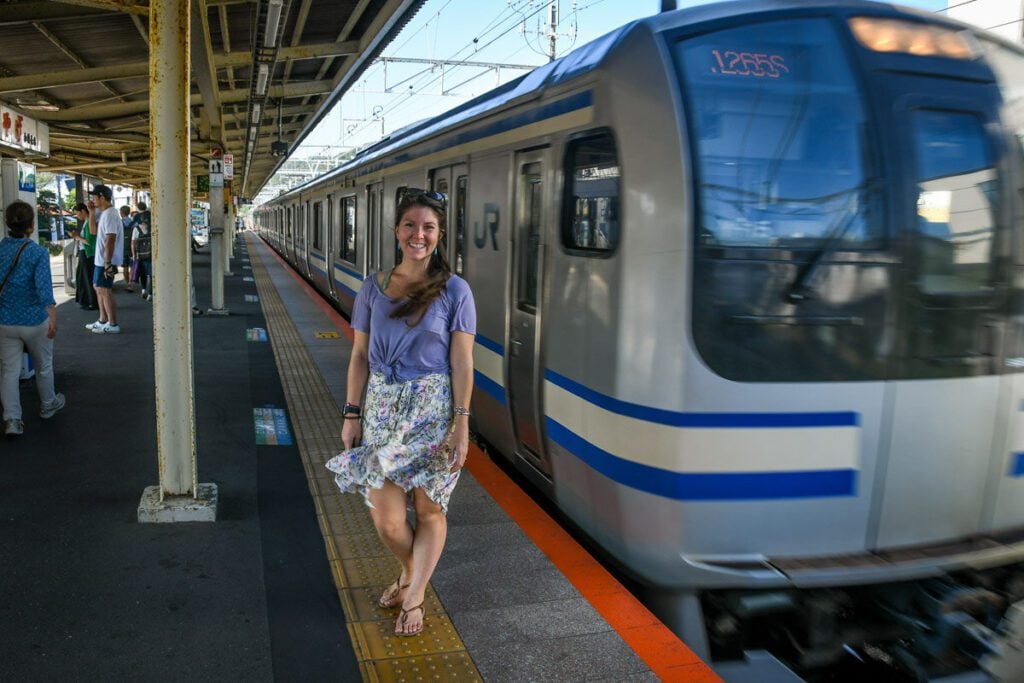
Roughly the size of California, Japan is a relatively small country. Yet it’s packed with an uncanny number of cool places to visit.
Planning your transportation around Japan can be overwhelming, even to a seasoned traveler.
The good news is that the country is very well-connected with roads, bus lines, metro systems, and the crown jewel of Japan’s transportation network: trains.
Known around the world for being clean, fast and efficient, the Japan railway system is an excellent way to see the country. Plus, riding in a Shinkansen bullet train is a bucket list experience in itself!
The only major downfall about the trains in Japan is that a single ride can be expensive. Depending on where you’re going, it can be very expensive.
But fear not, friend, there’s good news:
Travelers in Japan are eligible for a special train pass that gives you unlimited rides at a steeply discounted rate.
Yes, that means that you as a tourist get a better price on transportation than Japanese people get in their own country! Sounds strange, but it’s true.
Now it’s about time we introduce you to the Japan Rail Pass (also called the JR Pass).
Update Japan Rail Price Increase:
After years of keeping the price relatively the same, Japan Rail significantly increased the price of the JR Pass (upward of 77% increase) in October 2023.
It’s really a bummer because the JR Pass made traveling in Japan so easy, enjoyable, and quite effortless. We used the JR Pass on 3 trips to Japan and it was a huge money (and headache) saver.
This increase in price does mean that the JR Pass will not make sense for some travelers to Japan. However, we think you should still consider the Japan Rail Pass if:
- If you are traveling fast and a lot by rail. For example, if you travel from Tokyo to Nagano and back, and then head over to Kyoto with a day trip to Hiroshima and return to Tokyo (itinerary explained below), the JR Pass will cost about the same as buying the tickets individually.
- If you prefer to make your travels easier. Having the JR Pass in your pocket makes traveling by train so much more convenient, and you don’t have to worry about missing your train (we’ll explain later).
I’m sure you’re curious if the pass will work for your travels. We’ll provide you with some sample itineraries and tips on regional passes that might make it more worthwhile. But let’s start from the very beginning…
What is the Japan Rail Pass?
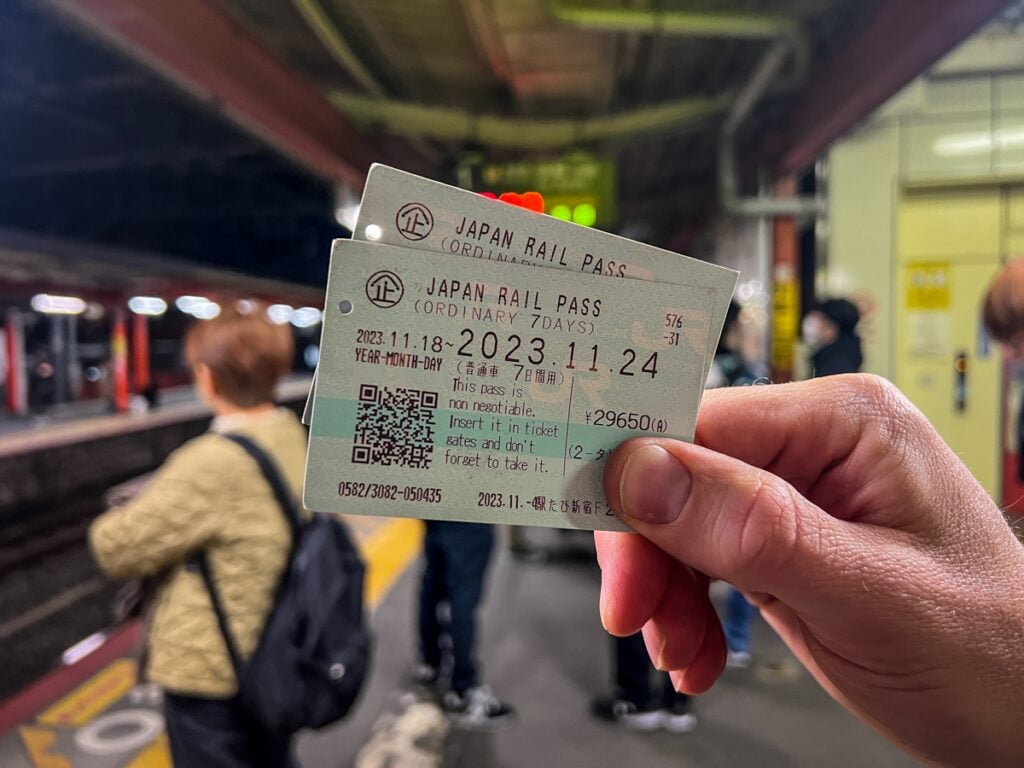
The Japan Rail Pass is a discount pass for Japan’s rail system that is available only to tourists (meaning you must be a temporary visitor in Japan).
By purchasing this pass, you will have unlimited travel on pretty much most trains in Japan during a 7-day, 14-day, or 21-day period.
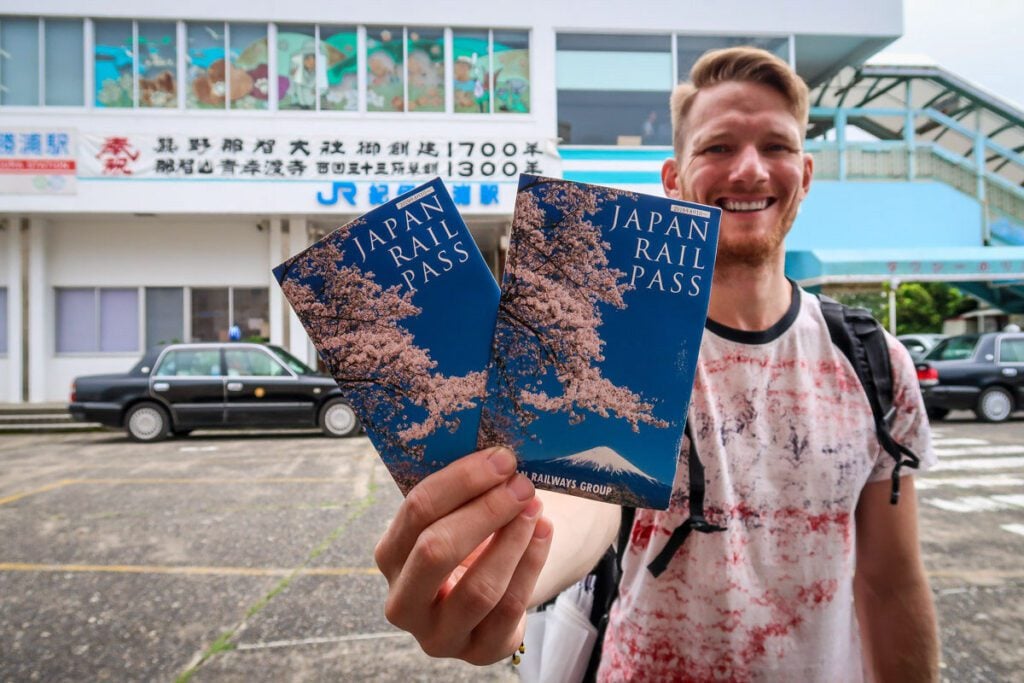
In this article, we’re going to go over how to calculate whether the Japan Rail Pass is worth it for your trip. We’ll also cover everything you need to know about it — from where to purchase the JR Pass, to how to make a seat reservation, and etiquette so you know what not to do on the trains.
And we’re not stopping there…
We’re going over everything you need to know about getting around Japan. From figuring out the trains to navigating the metro systems and even the local buses, we’re hitting it all!
Japan Rail Pass Guide
We’ve broken this article up into sections so you can jump around based on what you’re looking for:
- Japan Rail Pass price
- Is the JR Pass worthwhile?
- Money-saving calculation
- How much can you save with a JR Pass?
- Which trains does the JR Pass cover?
- JR regional passes
- Where to buy a Japan Rail Pass
- How to buy a Japan Rail Pass
- How to reserve seats
- Local trains vs. Shinkansen
- Catching a JR train
- Japanese etiquette on trains
- Can you use the JR Pass in Tokyo, Osaka and Kyoto?
- Japan Rail Pass FAQs
- What to pack for visiting Japan
This article is a big one, but it has everything you’ll need to know about transportation in Japan.
So bookmark it, take screenshots, or pin it for later! It is packed with advice that will save you money (and numerous headaches!) on train travel in Japan.
We condensed a lot of this article into this video below. We’ll explain why the JR Pass is worthwhile and how to use it once you’re in Japan:
→ Planning a trip to Japan? Find out the best time to visit Japan based on seasonal weather patterns and your personal travel style.
Japan Rail Pass price
Let’s start by going over the cost of the JR Pass.
Below we’ve broken down the prices for an ordinary pass (standard pass), as well as what it works out to be as a daily cost.
Again… as of October 1, 2023, Japan Rail has increased their prices. All prices are noted in approximate USD, however those rates will fluctuate according to the exchange rate with the Japanese Yen. Check the current price of the JR Pass here.
Adult Standard JR Pass
| Japan Rail Pass | Cost in JPY¥ | Cost in USD$ | Cost per day |
|---|---|---|---|
| 7-Day JR Pass | ¥50,000 | $338 | $48 |
| 14-Day JR Pass | ¥80,000 | $552 | $39 |
| 21-Day JR Pass | ¥100,000 | $690 | $33 |
As you can see, the longer the pass, the less expensive it is per day. And when you think about it, even at its most expensive, $48 per day for unlimited train travel isn’t too bad — especially when you consider some routes are upwards of $100 USD for a single journey.
If you’re looking for a bit more luxury, there is an option to upgrade to the Green Pass, which is just another way of saying “First Class”.
Adult Green Pass (First Class)
| GREEN Pass Japan Rail Pass | Cost in JPY¥ | Cost in USD$ | Cost per day |
|---|---|---|---|
| 7-Day JR Green Pass | ¥70,000 | $474 | $68 |
| 14-Day JR GreenPass | ¥110,000 | $758 | $54 |
| 21-Day JR Green Pass | ¥140,000 | $965 | $46 |
The Green Pass will get you:
- Wider and softer Lay-z-boy-style chairs that recline further
- More legroom than standard class seats
- Larger windows
- Snacks and drinks are served on some lines
- Larger luggage compartments
- Typically cabins will be less crowded and quieter
Is the Green Pass worthwhile?
People will have different opinions on whether the upgrade to the Green Pass is worthwhile. We personally found the ordinary pass to be very comfortable and just right for what we needed. We would not normally recommend the Green Pass.
Compared to trains in many other countries, the “regular class” felt like first!
However, if you’re very tall, are planning to do several long train journeys, or just like livin’ the first class life (and have some money to spare!), you might find it well-worth the extra dough.
The only time we think this upgrade might be worth the money is during very busy times of the year, like during Golden Week in Japan. Having the Green Pass means you don’t have to deal with waiting in lines or crowded cars.
Tip: Browse through the pictures in this article, which will give you a feeling of what the “regular class” looks like so you can make the best decision for your personal preferences.
Traveling in Japan with children?
Children 5 and under are free (yay!), and kids between the ages of 6-11 are half of the adult rate.
| Japan Rail Pass | Cost in JPY¥ | Cost in USD$ | Cost per day |
|---|---|---|---|
| 7-Day JR Pass | ¥25,000 | $169 | $24 |
| 14-Day JR Pass | ¥40,000 | $271 | $19 |
| 21-Day JR Pass | ¥50,000 | $339 | $16 |
Psst! We have a guide that is full of helpful tips for traveling in Japan with kids.
Now that you know exactly how much a JR Pass costs, let’s figure out if it will actually save you money…
Is the JR Pass worthwhile?

In general, Japan is a pretty expensive country to travel. If you’re anything like us, you’ll be trying to find every way possible to cut your costs in order to maximize your travel budget!
The JR Pass is one of our top tips for traveling in Japan on a budget, but we’ll be upfront and tell you it is still not cheap. And it might not be a good choice for everyone.
So the big question is this:
“Will the Japan Rail Pass save me money?”
Honestly, the answer varies for each traveler. In this section, we’re going to help you determine whether or not the Japan Rail Pass will be worthwhile for your trip.
The JR Pass offers three key benefits to make it worthwhile…
- Ease of use
- Wide coverage
- Flexibility
If you are planning to travel quickly to multiple cities on your trip to Japan, the JRail pass can still save you money, even with the increased prices!
Not only do you get unlimited train rides on the famous Shinkansen bullet trains (one of the fastest trains in the world), but you can also utilize some of the local buses, subways, and ferries throughout Japan.
Along with increased rates, the new JR Pass now includes access to the Nozomi & Mizuho Shinkansen bullet trains (with a small access fee). These routes are not only much faster, but were previously inaccessible with the old JR Passes.
Access with the new JR Pass will cut down on your travel time between major cities like Tokyo, Osaka, Kyoto, Hakata, and Hiroshima.
Plus, if you are a Japan Rail Pass holder, you get free access to the JR Narita Express train (N’EX), which is the fastest way to the airport. And it costs over ¥3,000 ($20 USD) each way if you don’t have the JR Pass.
Bonus Tip: Use your JR rail pass to go from Osaka to Hiroshima on a day trip and explore the highlights of this historically significant city.
Is the JR Pass worthwhile?
If you plan to fly into Tokyo and travel the “Golden Route” to Kyoto, Osaka, Hiroshima and Kanazawa, it makes sense to purchase the JR Pass.
The cost of the 7-day pass is less than it would cost to travel between these popular cities with individual train tickets on the bullet trains.
And if you plan to visit any more than these locations, well, the pass will absolutely pay for itself.
This is going to be true for lots of travelers in Japan. However, there are exceptions. Keep reading to see if you fit into any of these categories:
The Japan Rail Pass is probably not worthwhile if…
Below are the reasons the JR Pass may be more money than you need to spend.
You’re only visiting Osaka and Kyoto
These cities are very close together, so the most time-consuming journey between the two is just shy of an hour and can be as cheap as 400 yen (~$3) depending on which train line you take. For a trip like this, we’d recommend getting a Kansai Area Regional Pass, which is about $45 USD for 4 days in the Osaka and Kyoto area.
Even the fastest route (15 minutes!) between Osaka and Kyoto is inexpensive at just 1,420 yen (~$11 USD). So if these are the only two cities on your Japan itinerary, you may not need to purchase the JR Pass.
You fly into Tokyo and fly out of Osaka (or vice versa).
If you only need to go one-way through the country (aka you’re flying in and out of different airports), this cuts your train cost in nearly half because you don’t need to return to your starting location. In this case, the JR Pass will in fact be more expensive.
You are traveling very slowly
If you plan to spend several days in one area of Japan, the JR Pass may not be worthwhile, as it must be used for consecutive days.
For example, if you are a backpacker and you’re planning to do some hiking or WorkAways to keep costs low on your trip to Japan, the JR Pass might not be the best option for you.
Tip: You may want to consider getting a shorter pass, like the 7-day, and use those days to do the majority of your traveling. It’s also worth noting that you don’t have to start the JR Pass the day you land in Japan. You can spend a few days in Tokyo, then start your pass and begin your 7-day period.
You’re traveling in remote parts of Japan
If you’ve looked at your itinerary and most of the places you’ll be going are not covered on the JR Pass (for instance, you’re traveling only in Okinawa or western Japan), it wouldn’t make sense to purchase the pass. You might want to consider renting a car instead.
What it boils down to is this: The Japan Rail Pass will likely save you money if you are visiting three or more cities in Japan and returning to your starting location.
Money-Saving Tip: Keep in mind that you may want to get a JR Pass for just a portion of your trip. For example, if you plan to travel in Japan for 2 weeks, a 7-day pass might be all you need if you plan to spend the beginning and end of your trip in one place.
How to calculate if the JR Pass will save you money
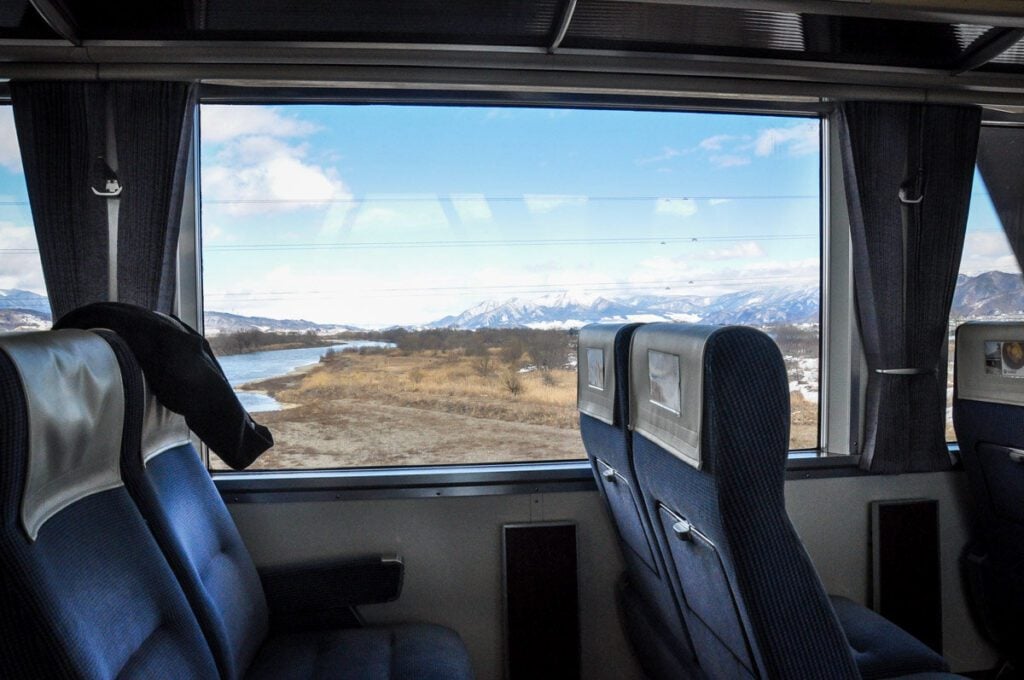
Be sure to look up how much each individual train ticket costs by plugging your route into the fantastically user-friendly (and free!) Japan Travel by Navitime to see how much each train journey will be without the JR Pass.
We did just that and recorded our findings below to show you how much money the Japan Rail Pass saved us.
How much money we saved with the JR Pass

We’ve traveled to Japan three times, and each trip had a very different time frame, itinerary, and budget. For all trips, we had a Japan Rail Pass (at least for a section of it), and it saved us money each time.
Japan trip #1
- When: February 2015
- Duration: 1 week
- Budget: Tiny!
- Itinerary: Osaka > Kyoto > Tokyo > Nagano > Tokyo > Osaka
During this trip, we purchased the 7-day pass, which was a lot of money for us to fork over at the time. We were living and teaching English in South Korea back then, and compared to the cost of trains in Korea, we felt like the JR Pass was super expensive.
We know it can be frustrating handing over a big chunk of money like that before your trip. Our JR Pass was more expensive than our flight to and from Korea!
But it turned out to actually save us a ton of money.
- What we paid for the 7-day JR Pass: $273 USD (old price)
- What we would have paid for transportation without the JR Pass: $463 USD (50,260 yen)
- How much money the JR Pass saved us: We saved $190 USD each!
- Note: Even with the increase in the JR Pass price in 2023, the JR Pass would still save us money since the 7-Day Pass is about $332 USD.
Japan trip #2
- When: August 2019
- Duration: 3 weeks
- Budget: Medium, but still trying to be mindful of our spending
- Itinerary: Osaka > Mount Koya > Kii Peninsula > Hiroshima > Nara > Osaka > Kanazawa > Takayama > Alpine Route > Matsumoto > Magome > Kamakura > Tokyo**
During this trip, we ordered the 21-day pass, since we were traveling to many places and doing so quite quickly.
Since we were traveling around so much of Japan, we knew the pass would be well worth the money. Just see our savings below, it’s kind of mind-boggling!
- Price of the 21-day JR Pass: $544 USD (old price)
- What we would have paid for transportation without the JR Pass: $889.50 USD (96,650 yen)
- How much money the JR Pass saved us: We saved $345.50 USD each!
That means on our two trips to Japan, the JR Pass saved us a combined $1,071. That’s one hell of a savings if you ask me!
Note: These estimates don’t include the JR metro lines we used within Osaka, Kyoto and Tokyo, which saved us additional money.
Japan trip #3
- When: November 2023
- Duration: 3 weeks, but only 1 week with the JR Pass
- Budget: Medium, but still trying to be mindful of our spending
- 1 week Train Itinerary: Tokyo > Kyoto > Nara > Kyoto > Tokyo > Narita Airport
We purchased the 7-Day pass for us (our 1-year-old daughter rode for FREE!) for this leg of our trip. We spent the first two weeks in Japan with a rental car going to places like Nikko, Nagano, Takayama, the Nakasendo trail, and the Mt. Fuji area.
We purchased the pass in September 2023 (before the price increase) and were able to activate it in November 2023, since you have 90 days to activate the voucher once you purchase it.
- Price of a 7-day pass in Sept 2023: $207
- What we would have paid for transportation without the JR Pass: $211 (31,500 yen)
- How much money the JR Pass saved us: $4 each
We knew this trip was not going to be the biggest savings trip, but we got it because at the time it was nearly equal to the price of getting the train tickets individually. This way we did not have to wait in line or manually book the trains ourselves.
**Some of the destinations on this trip were not part of the JR lines, so we incurred additional costs.
Which trains does the Japan Rail Pass cover?
Alright, let’s get into the nitty gritty.
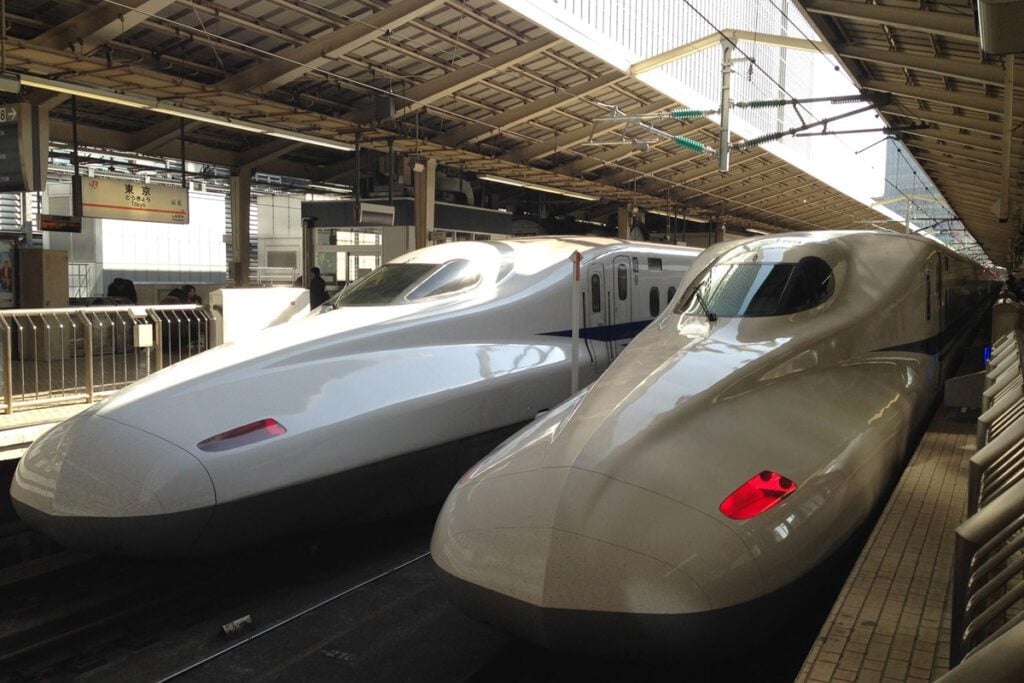
The JR Pass covers:
- many train lines around Japan
- Shinkansen bullet trains
- Narita Express (between Tokyo and Narita Airport)
- some metro lines in cities like Osaka, Kyoto, and Tokyo, denoted as JR lines
- some JR bus routes around the country
- some ferries around the country, like the ferry from Hiroshima to Miyajima Island
- Nozomi and Mizuho Shinkansen lines are NOW covered in the JR Pass!
- Note there are small access fees associated with booking these ultra-high speed routes even with the JR Pass.
The JR Pass does NOT cover:
- some other private train lines are not covered
- the majority of buses and ferries around the country are not covered
It’s also worth noting that some popular tourist areas are not covered in the JR Pass. For some areas you can find a regional pass to cover your travel there.
Below are just a few areas worth noting, but it certainly is not an exhaustive list:
- Hakone: This small mountain town known for its onsens and views of Mount Fuji can be reached by JR trains, but once you’re there, getting around the area is not covered. Instead, most tourists buy the Hakone Free Pass, which includes all bus, boat, and cable car transportation in the area.
- Koyasan: This area known for Buddhist temple stays and stunning Okunoin Cemetery cannot be accessed with JR trains. The Koyasan World Heritage Ticket is what most visitors use for this area.
- Shirakawago: JR trains do not pass through this UNESCO site. Instead, visitors must purchase bus tickets, which can be quite expensive.
- Tateyama Kurobe Alpine Route: To travel through this area, visitors must take a handful of different modes of transport, including buses, cable cars, and funiculars, all of which is included in the Tateyama Kurobe Option Ticket.
- Kamikochi National Park: Another region that is not connected by JR trains.
- Okinawa: This prefecture is made up of a grouping of islands that lie 400 miles southwest of mainland Japan, and most travelers will get there by air. Taxis and buses are a decent way to get around for exploring Okinawa.
JR regional passes
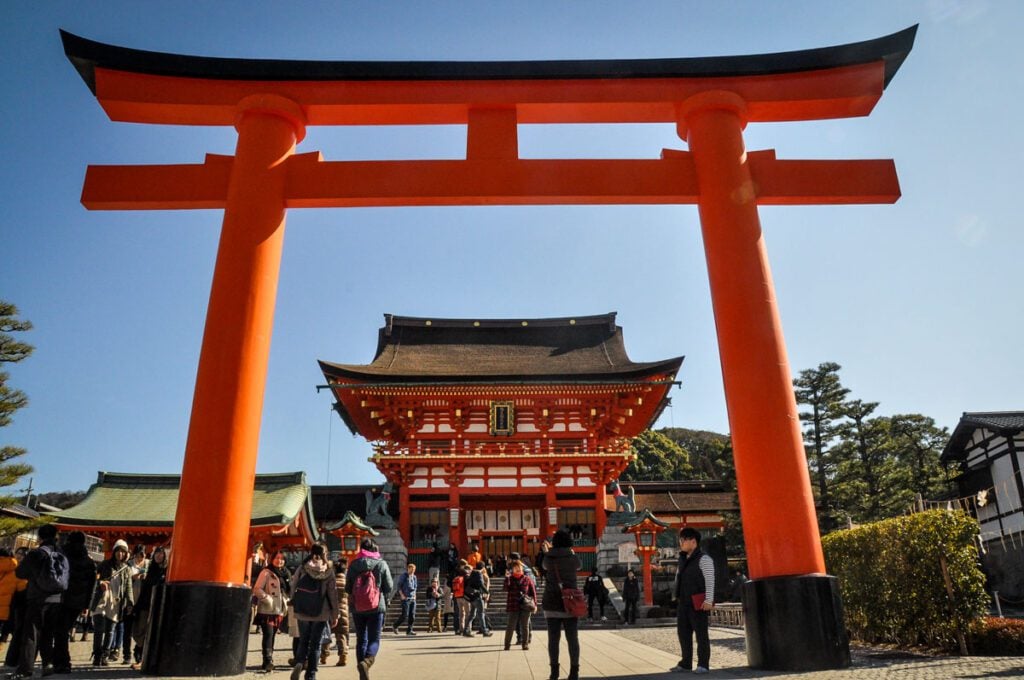
Depending on where you plan to travel in Japan, it might make more sense for you to look into getting a JR regional pass, instead of the JR Pass for the whole country.
The following regional passes are available through Japan Rail:
Western Japan Passes
(The names can be confusing, but the further you go down the list the more extensive the train network, as well as the price.)
- JR Kansai Area Pass: This inexpensive pass includes the metros around Kyoto and Osaka. The nice thing about this pass is you can select the number of days you would like ranging from 1 to 4 days.
- JR Kansai Wide Area Pass: This pass permits travel in the popular Kyoto and Osaka regions and further. It includes connections to cities like Himeji, Kobe, Kyoto, Osaka, Nara, and Wakayama.
- JR Kansai-Hiroshima Rail Pass: This pass has similar coverage as the Kansai Wide Area Pass, but it stretches further to Hiroshima and includes the Miyajima Ferry.
- JR Sanyo-San’in Area Pass: This pass continues to give you more access to cities like Fukuoka in the south. It pays for itself with one round trip from Osaka to Hiroshima.
- JR Sanyo-San’in Northern Kyushu Pass: Gives you greatest unlimited train travel in the south and west of Japan in the Chugoku region, northern Kyushu, and parts of the Kansai Region.
Central Japan Passes
- JR Takayama-Hokuriku Area Tourist Pass: This pass is great for exploring Kyoto and Osaka, as well as traveling to the Central cities of Kanazawa, Takayama, and Shirakawago. There are a few bus routes that are included and only a short section of rail that is on a Shinkansen train.
- JR Hokuriku Arch Pass: One of the more interesting JR Passes as it connects Tokyo to Osaka and Kyoto but it takes a northern route (creating an arch, get it?!) through cultural gems like Nagano and Kanazawa.
Eastern Japan Passes
- JR East-South Hokkaido Rail Pass: This is an ideal choice if you are planning to travel between Tokyo and Hokkaido as this pass covers the extensive rail network in the eastern area of Japan’s largest (and main) island and the southern parts of Hokkaido.
- JR Hokkaido Pass: This pass is valid for the entire north Japanese island, including the Hokkaido Shinkansen (coming soon!)
Alternative transportation
In some of these places, like Okinawa, Hokkaido, Kamikochi, and near Shirakawago, it may even make sense to rent a car or take a bus.
When planning your Japan travel budget, be sure to consider which transportation passes you will need in addition to the JR Pass. Many travelers won’t need any at all, as the JR Pass really does a fantastic job of connecting the country.
However, if you plan to visit any of the above places (good for you – they are all highly recommended!), they do come at an additional cost. Again, this is not an exhaustive list of places not covered.
→ Looking for somewhere to go? Check out our list of the most beautiful places in Japan you’ll have to see to believe!
Where to buy a Japan Rail Pass
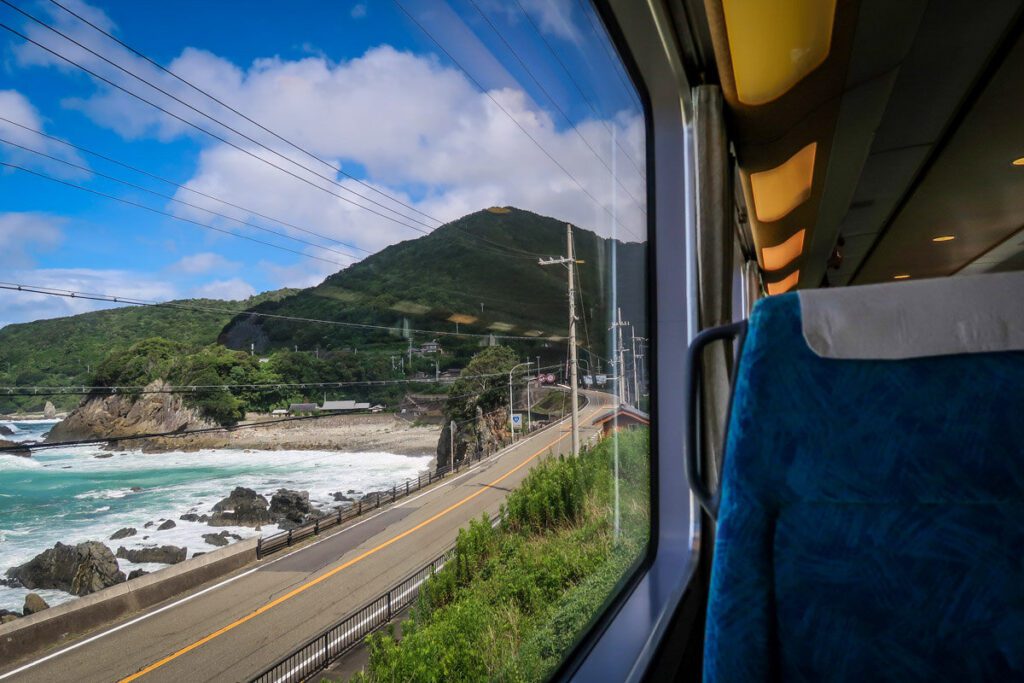
Hopefully, you’re reading this article in preparation for your trip to Japan, because purchasing your JR Pass is actually quite easy online.
Purchasing your JR Pass online
You can purchase a JR Pass online through an official Japan Rail Pass reseller. There are a handful of companies out there, but with any purchase this big, we like to be sure we are going through a reliable, trustworthy source.
When it comes to different vendors, the prices are within dollars of each other. So you don’t really have to worry about spending too much or seeking out the best deal possible – the difference is negligible.
What does matter though, is finding a company with excellent shipping records and great customer service.
Before all of our trips to Japan (in 2015, 2019, and 2023), we ordered passes through JRail Pass (www.jrailpass.com), an official vendor. Both times, our communications with JRail Pass were professional and timely.
Plus, our passes arrived incredibly quickly, which brings me to our next point…
JRail Pass can ship your pass(es) directly to your home. Anywhere in the world. Yes, really! Here’s proof:
- In 2015, we received our JR Pass package in South Korea.
- In 2019, we received our JR Pass package in Bali.
- In 2023, we received our JR Pass package in Oregon, USA.
Another option is to have your JR Pass delivered straight to your hotel in Japan. This is a good idea if you are ordering your pass last minute, or just don’t want to risk forgetting to pack it!
Our personal opinion: We liked having our JR Pass in hand before our trip, and we activated our pass at the airport.
Alternative option: You can order your Japan Rail Passes through our partners at Get Your Guide. It is a very similar process and could save you a few bucks.
Quick facts about JRail Pass
- They can ship anywhere in the world (or you can have your pass delivered to your hotel in Japan)
- They have standard 2-day free shipping (when the order is over a minimum amount)
- They have a 24/7 customer service message line
- Every purchase comes with a free Japan Guide
- JRail Pass has some of the most competitive prices on the market, and is actually the cheapest we’ve found. Like we said above, it’s only a couple dollars less than the competition
- They have excellent reviews!
Overall, we were very happy with the service and can highly recommend them to anyone else looking for a trustworthy company that sells JR Passes.
Don’t just take our advice! We always encourage readers to do their own research before making big purchases.
Can you purchase a JR Pass in Japan?
Buying the pass in Japan was, for a limited time, possible at certain train stations and airports. But as of October 1, 2023, it is not possible to buy the JR Pass in person.
How to buy a Japan Rail Pass

When you purchase your JR Pass, it’s not as simple as giving your credit card info and receiving a digital pass. Maybe it will be that easy someday! But for now, there are a few more steps involved.
Steps for buying your JR Pass:
- Order your JR Pass online
- Your pass packet will be mailed to your home in 2 days (or delivered to your hotel in Japan if you choose)
- Once you’re in Japan, exchange your order for the REAL pass!
- Activate the pass when you ride your first train!
Alright, that’s the super trimmed-down version, but if you want to know what “exchanging your order for the REAL pass” actually looks like, keep reading…
1. Purchase Japan Rail Pass online
Just like booking a flight, fill out the name of each passenger, length of pass (7, 14 or 21 days), standard or Green Pass (first class), estimated date of arrival in Japan, and delivery address for the ticket voucher.
You can do this on the JRail website.
Enter your digits for payment, confirm your information and submit your order. That’s it. Now you’re going to Japan!
Don’t you love that feeling of clicking that “order complete” or “purchase ticket” button? Ohhh, so satisfying.
2. Receive your ticket voucher in the mail
Once you complete your purchase online, you’ll be sent a confirmation email with a tracking number. That way you can follow your ticket voucher (also called an “exchange order”) all the way to your doorstep.
JRail has standard 2-day shipping, so you should plan accordingly. With your ticket voucher in hand, you’re ready to head off to Japan.
Alternatively, you can choose to have your JR voucher delivered to your hotel in Japan. This is a preferred option for some travelers and hotels in Japan are very used to this sort of delivery.
One thing to note if you choose to use the hotel delivery is you will have to pay for your transportation from the airport into the city, as you won’t have your physical JR Pass with you.
Important: The exchange order is NOT your JR Pass, but instead it is a voucher of sorts. You will need to present your exchange order along with your tourist visa (stamp in your passport) at the train station, as explained below.
3. Travel to Japan and get a tourist visa stamp
When you land in Japan, you’ll pass through immigration where you’ll get a tourist visa stamp in your passport. You’ll need your tourist visa stamp to exchange the ticket voucher for the real Japan Rail Pass.
For Americans and many other nationalities, the visa is free if you’re traveling for less than 90 days. (For Americans, you don’t need to apply in advance for this visa. You will simply receive a sticker in your passport as you pass through immigration at the airport.)
By the way, going through Japan immigration is one of the smoothest processes we’ve ever had!
Other nationalities: If you’re not sure whether there is a fee or not, it’s always good to double-check on your embassy’s website.
4. Visit a Japan Rail (JR) Station to exchange your order for your REAL Japan Rail Pass!

You’re finally in Japan with the ticket voucher and a tourist visa, woohoo!
Now, head to the nearest JR Exchange office. They are located in many train stations, especially the larger ones. (Here is a list of the JR Exchange offices and hours.)
This is where you will trade the voucher for your official Japan Rail Pass ticket. At the office, you can specify the date you’d like your pass to start. The only rule is that it cannot be more than 30 days in the future.

Once you have made the exchange and received your physical pass, you’re almost ready to start exploring Japan!
But don’t leave the JR Office just yet…
The next thing you’ll need to do is reserve your seats, which you can do at the same counter where you get your pass.
How to reserve seats on a JR train

First of all, it’s good to know that you do not need to reserve seats for every single train you plan to take in Japan.
More often than not, the JR trains you will ride will be within the same city or will be labeled as regional or local trains. These are similar to metro trains and you can sit wherever you want. You cannot reserve seats on these trains.
The JR trains you should reserve seats in are the Shinkansen bullet trains that run in between major cities. Many local Japanese people travel on these routes, so they tend to book up.
So if you know the dates and times you’ll be traveling from one major city to the next on a Shinkansen, we would recommend booking those tickets at the same time when you exchange your voucher so you know you’ll have a reserved seat.
Here is our best advice
Before your trip to Japan, make sure you know which days and times you’ll be making your longer train journeys. Write down the information so you can easily reserve your seats in person.
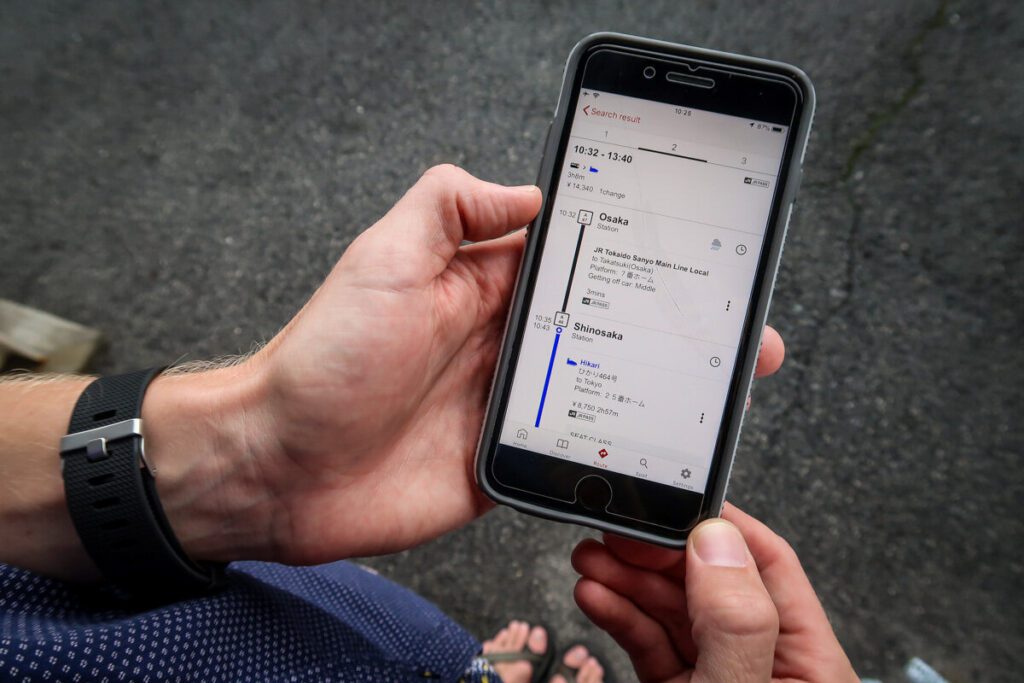
Here is exactly how to do this:
- Open the Japan Travel by Navitime App.
- Plugin the date, time and cities you’ll be traveling between.
- Click on Tourist Pass and select “Japan Rail Pass”.
- You should get a list of all available times and trains for your intended route.
- Choose the best one and write down the following information:
- Date, Departure Time (in Military Time), Departure City, Arrival City, Train Type and Number
- Repeat this process for all major routes that you plan to take within Japan.
When you arrive in Japan, go to one of the JR ticket offices and show them each train you’d like to reserve.
They will reserve your seats and print off tickets, which you will need to store in a safe place. This ticket will tell you the departure time, station, car, and seat.
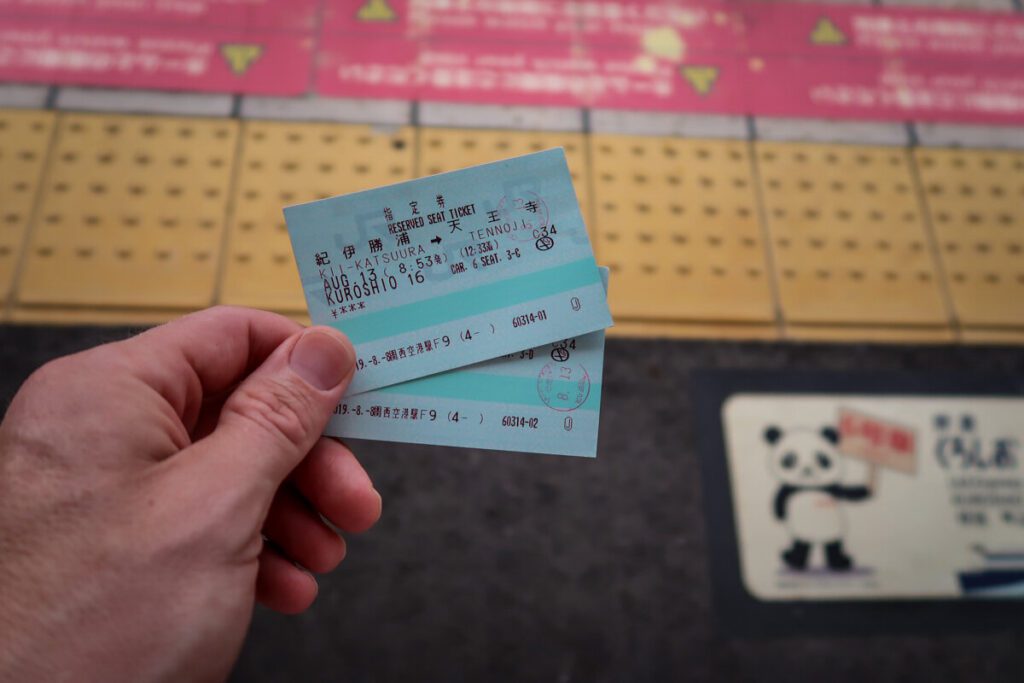
Local train vs. Shinkansen
You may have noticed we’ve referenced “local trains”, “regional trains”, and “Shinkansens” a few times in this article. If you’re confused, don’t worry — we’re about to explain.
Local trains
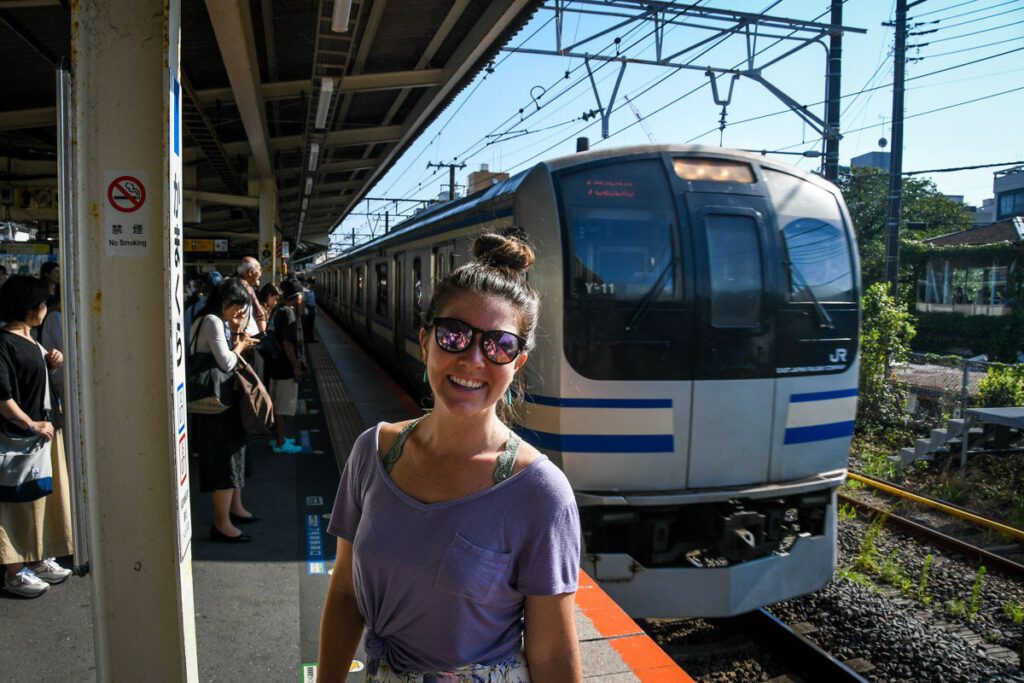
Similar to a city metro, local JR trains stop frequently within the same city. You enter through a gate at a station and you can sit anywhere on the train that you like. Sometimes the trains have seats along the windows (subway style) or the seats are two by two, it just depends on the train.
Japanese train etiquette: It is frowned upon to eat while riding on local trains. Please wait until you get off at the station. Read more Japanese etiquette tips here!
You cannot reserve seats on a local JR Train. On the Japan Travel by Navitime app, JR local trains have a normal train icon and are denoted with the JR Pass symbol like this:
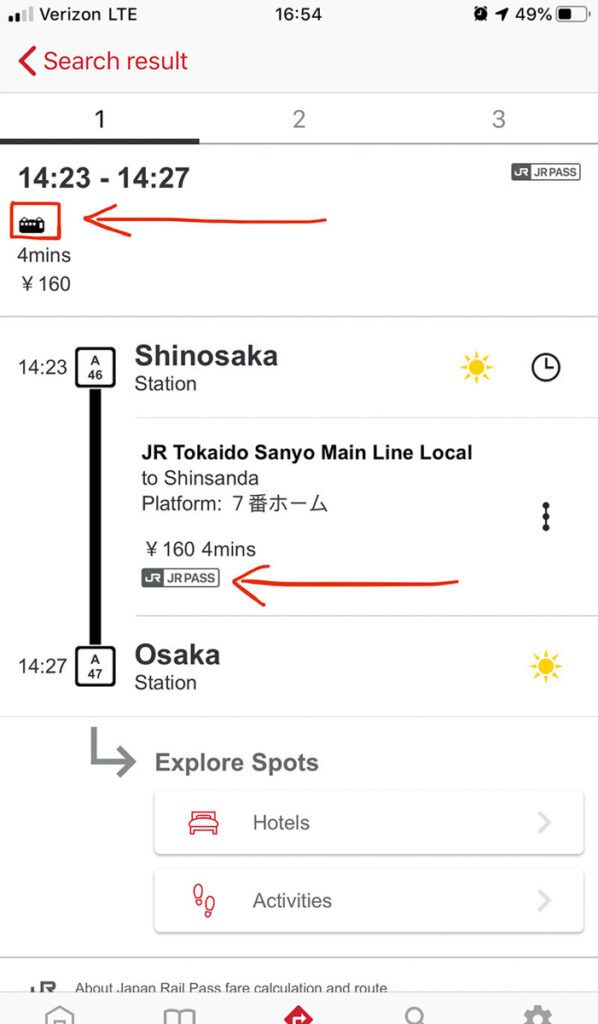
Regional trains
Almost identical to the local trains, regional trains make fewer stops and tend to be routes that link two towns together. The seats on the train tend to face all one direction, but sometimes they don’t.
You cannot reserve seats on a regional JR Train. On the Japan Travel by Navitime App, regional trains look just like a local train, but may say “Express Line” or “Limited Express Line”.
Shinkansen (bullet trains)

Shinkansens are the bullet trains that Japan is famous for (the kind in that Brad Pitt movie). The Shinkansen trains stations tend to be HUGE so make sure to budget extra time to get to your train.
You’ll have to go through the JR ticket gate and then follow the signs to the Shinkansen tracks, where you’ll have to pass through another JR Shinkansen ticket gate (you’ll have your Japan Rail Pass so you have free entry to these trains).
The trains look super sleek and are really nice inside. There are assigned seats in Shinkansens so make sure you’re in the right car, row, and seat. Typically there will be bathrooms in at least every other train car.
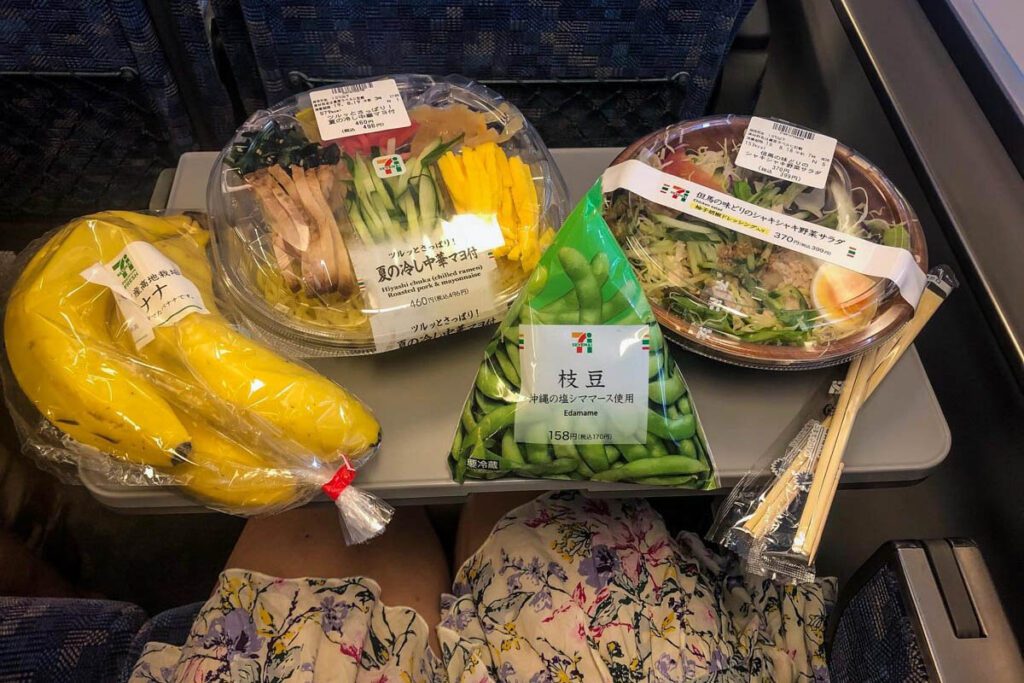
Good to know: You can eat on Shinkansen trains! Just be mindful of your neighbors and don’t eat anything too smelly.
You should reserve your seats ahead of time at any JR ticket service counter because Shinkansens tend to book up.
On the Japan Travel by Navitime App, Shinkansen trains have a Shinkansen-looking icon and show prices for reserving a seat, but you don’t have to worry about paying this because you’ll have the JR Pass. Here is what it looks like this:

What happens if there are no seats available?

Sometimes Shinkansen trains completely book up, especially during big holiday weeks (April 27-May 6, Aug 11-20, & Dec 28-Jan 6).
If the reservable seats on a train you want are completely full, you may still be in luck! On each Shinkansen train, there are three train cars that have non-reservable seats (first come, first serve) at either the front or back of the train.
Follow signs at the train station to get in the non-reservable Shinkansen cars. Try to get to the platform early because there tends to be a line for the non-reservable cars.

We even rode in a non-reservable car from Hiroshima to Osaka and we had to stand in the aisle for the entire hour-and-a-half ride because there were no seats open. We learned our lesson to book seats far in advance.
If there are no seats available on Local or Regional trains, try entering another car to find an open seat. If you still can’t find one, unfortunately, you’ll have to stand until someone gets up and leaves their seat.
Catching a JR train

Okay, so you’ve exchanged your voucher for your JR Pass and you’re ready to catch your first train.
Once you arrive at the train station, look on the many electronic displays for the train or platform you need. Or you could look at the Japan Travel by Navitime app and it will most likely tell you which platform to be on.
Head to the turnstile gate and insert your JR Pass card into the ticket slot. The gate will open and your card will pop out the other end. DO NOT FORGET TO GRAB YOUR CARD! You need this for all other travels.

Now you’re inside the gate. If you’re going on a regional or local train, head to the platform and wait in line. If you are riding a Shinkansen, you’ll have to go through another set of turnstiles where you again insert your JR Pass card.
Now, find your train platform by reading the digital signs and finding your destination.

When you get to the platform, it’s important to figure out where to queue. Look at your ticket, which has the car and seat number.
The platform ground has markers indicating where your car will stop, so you can wait in the correct spot.
Japanese train etiquette
Manners are taken to another level in Japan, and certain things that you might not think twice about could be considered very rude.
Let’s talk about food on trains.
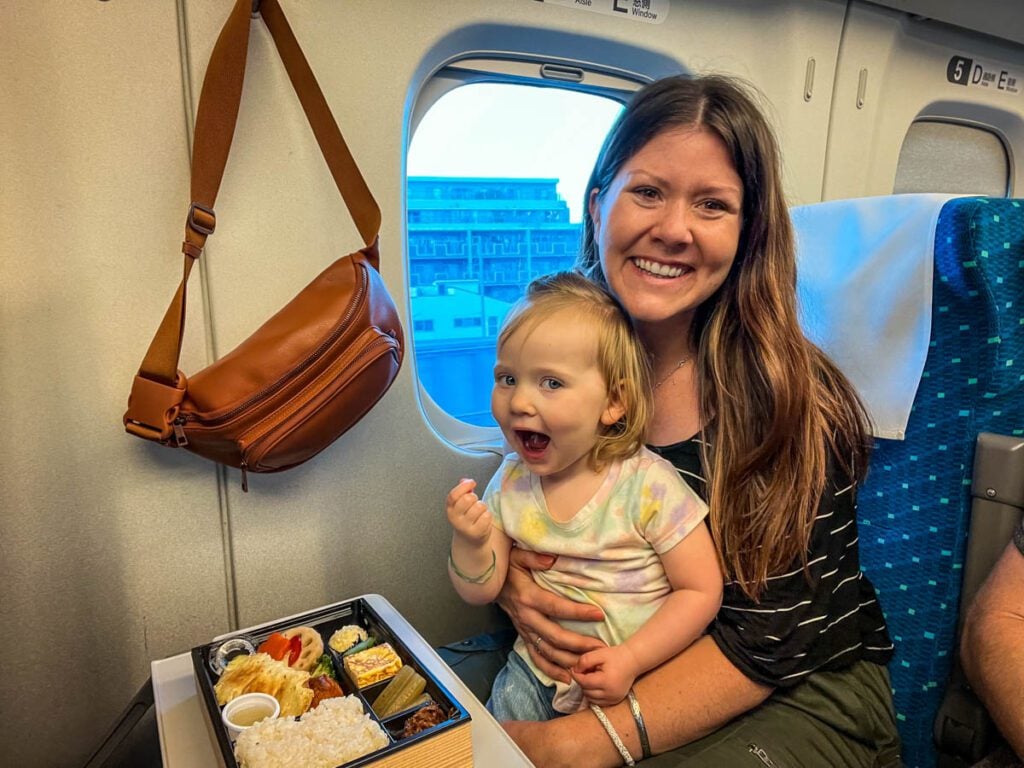
It is considered disrespectful to eat food or snacks on trains other than Shinkansen trains. If you do have a meal on a Shinkansen, it should not be too smelly or loud (yes, I know, it sounds silly). Try grabbing a bento box at the train station, they make great meals for the ride.
And of course, try your best to be tidy, even with a toddler.
Speaking of tiny humans, don’t forget to pack a nursing cover for feeding or soothing your child on a Japanese train. We have an entire article on what to pack in Japan so you don’t forget anything.
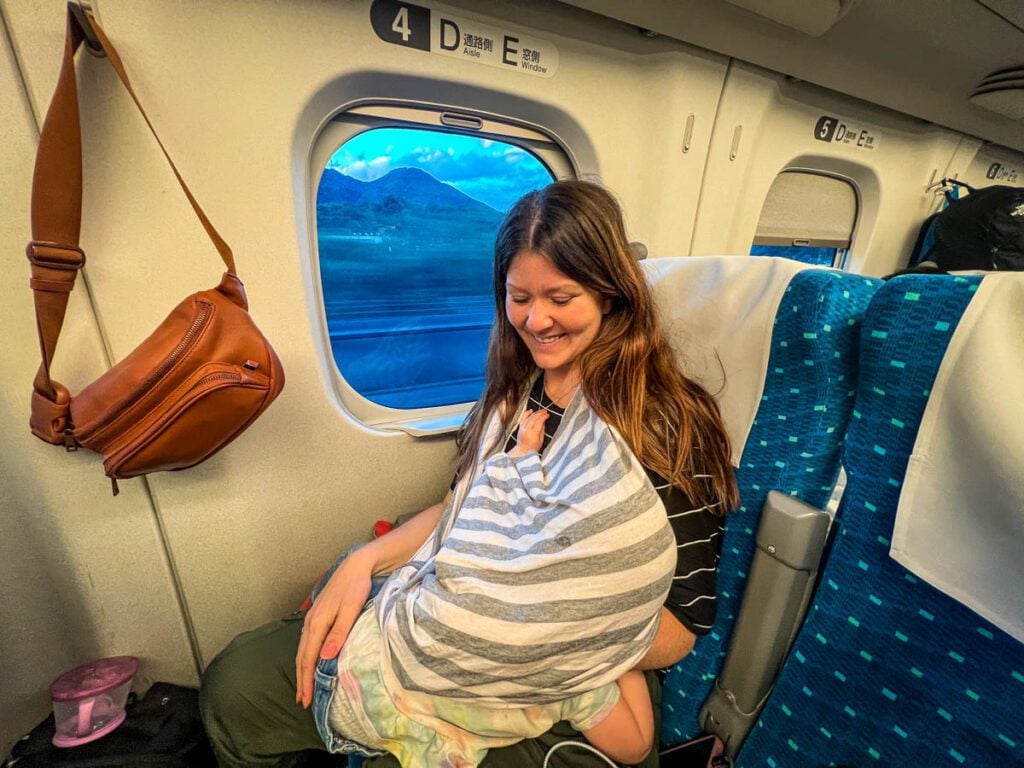
When traveling on trains you should always be respectful of the people around you. This means staying quiet, not putting your feet up or taking extra seats. Knowing which trains are female only and how to exit swiftly is also important.
Be sure to check out the section on train etiquette in our Japanese etiquette article!
Can you use the JR Pass in Tokyo, Osaka and Kyoto?
Yes, but probably not exclusively.
Here’s why:
The JR Pass includes free access on some metro lines in Tokyo, Osaka, and Kyoto.
It’s great because a lot of big sites—like the Fushimi Inari Shrine, for example—are on JR lines. This means getting there as a Japan Rail Pass holder is FREE! *Cue the pouring of champagne!*
Okay, I suppose I just got ahead of myself… While you can get some places within Tokyo, Osaka, and Kyoto for free by using your JR Pass, there are many gaps.
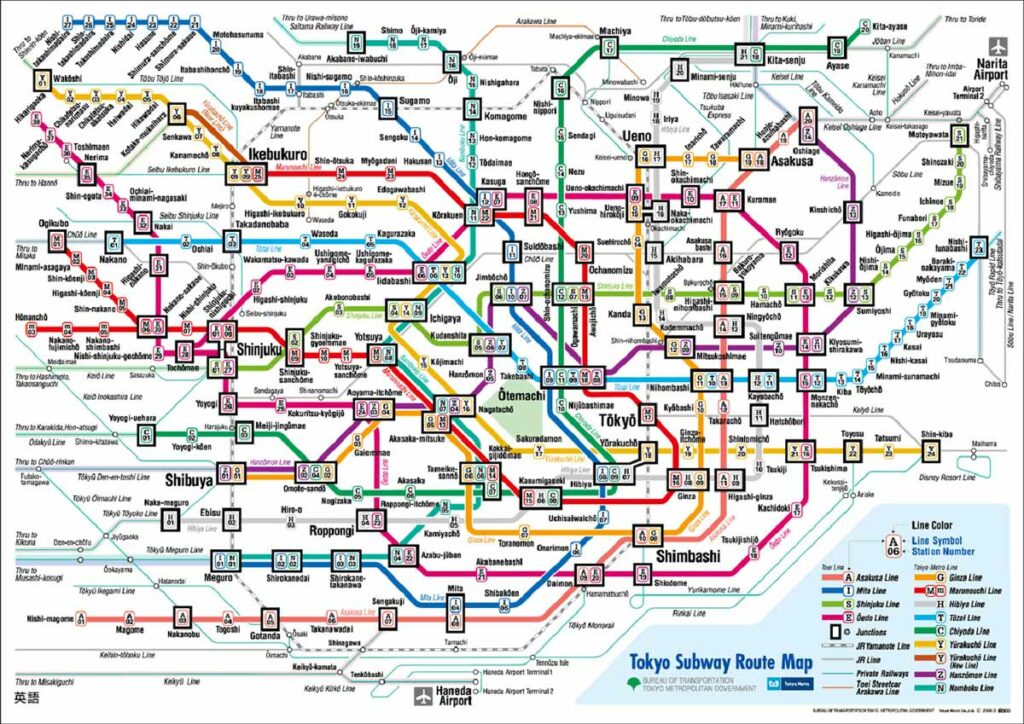
For example:
- In Osaka, getting to Dotonbori, the popular downtown district, takes a bit longer with just the JR Pass. The closest JR station is JR Namba, which is still a 10-minute walk to get to the center of Dotonbori.
- In Tokyo, the closest JR station to the Tokyo Tower is a 16-minute walk away, whereas the closest metro is half that distance.
So in addition to using your JR pass, we also recommend getting a local transit card or IC card.
Like with everything in Japan, it is a little confusing at first glance, so we’re delving into the different options and we’ll help you get the best one for your trip.
What type of IC card should I get: SUICA, ICOCA or PASMO?

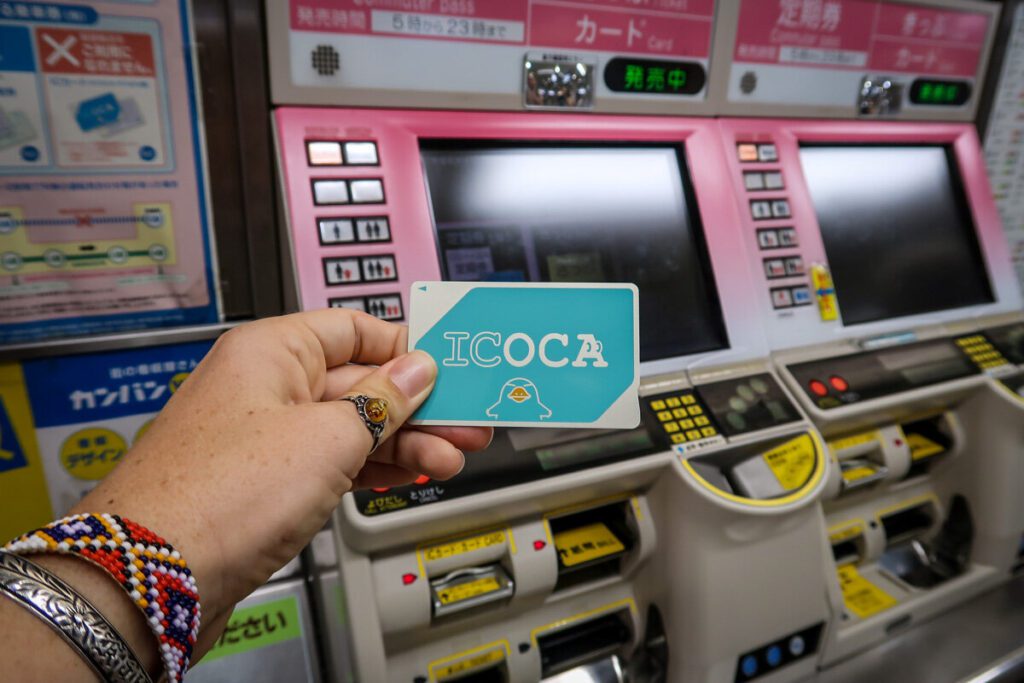
A few years ago, you could only use certain cards for specific metro systems. Tokyo had the Suica Card and Osaka had the ICOCA Card.
But today, no matter what card you have, you most likely can use it throughout Japan. You can either get a physical card or download it on your phone. Hint: We recommend getting it on your phone so it’s easier to top off!
Suica Card
The Suica Card is a refillable metro card. You can purchase this card at certain kiosks at any station, mostly in the Tokyo area. You’ll start with putting 2,000 yen (~$15.15 USD) on the card, 500 yen of which is a deposit, so you’ll have 1,500 yen for riding the metro.
It works just like an Oyster card in London where you tap in and out of the metro gates. It even works on buses and at convenience stores too!
If your balance begins to run low on funds, you can always recharge the card at ticket kiosks.

Once you are done riding the metro, go to any JR station and they can refund your balance and 500 yen deposit. However, there is a 220 yen fee to refund the deposit, so if you have more than 220 left on the card, the fee will be subtracted from the balance and then you will be refunded the remainder.
Psst! Read up on where to stay in Tokyo for our top neighborhood and hotel recommendations.
ICOCA Card
The ICOCA is a refillable metro card. It is almost exactly the same as described above for the Suica card and can also be used throughout Japan. The sole difference is that the ICOCA card can only be refunded in the Kansai region (Osaka, Nara, Kyoto, etc.) at JR stations.
Digital IC Cards
We recommend downloading an IC Card on your phone so you don’t have to go to a kiosk in order to top up. For our last trip, we both downloaded Suica Cards to our Apple Wallet, linked a credit card, and added funds even before we started our trip.
Here is how we added a card to our phone:
- Open the Wallet App
- Tap the Add “+” sign in the top right
- Tap Transit Card
- Scroll to Japan and you’ll see ICOCA, PASMO, and Suica. Select a card.
- We tried ICOCA and PASMO, but we were only able to get Suica to download to our phones.
- Follow the prompts and add funds via a linked credit card.
- Note: we did not have success with our VISA cards, but our American Express cards worked.
Once you load funds onto your phone, all you have to do to board a train is tap your phone on the area in the turnstile (and tap out to exit).
Japan Rail Pass FAQs
Have more questions about purchasing and using the Japan Rail Pass? We’ve got the answers you’re looking for!
Am I eligible for the Japan Rail Pass?
Most likely, yes.
The main rule is that you need to be a temporary visitor in Japan (aka a tourist).
This means that Japanese nationals are not eligible for the special deal that JR Pass holders receive. When you think about it, it’s pretty crazy that foreign tourists get a better deal on the trains than locals!
When you land in Japan, you’ll have to go through immigration where you will get a stamp in your passport, which serves as your Tourist Visa. You must present this stamp in the JR office to receive your physical Japan Rail Pass.
For most nationalities, including US citizens, it’s free to enter Japan for less than 90 days. Be sure to check with your country’s travel department to see if there is a cost for a Tourist Visa.
Can I purchase my Japan Rail pass when I get to Japan?
That’s a great question. We wondered the same thing before our trip. For a limited time, Japan Rail did sell the JR Pass within Japan, but they ended that service on October 1st, 2023.
Personally, we would rather buy it ahead of time online to give us peace of mind before a big vacation. Not to mention you’ll save money on an already pricey trip.
It kind of stinks that you have to fork over a (big) chunk of change before you even board your flight, but that’s just how it is. Besides, according to “travel math”, anything you pay for before your trip is basically free… right??
Your pass will be mailed to your home address, so do not delay this process. We cut it pretty close by ordering our passes a week before our trip, but thankfully, the shipping is fast and we got the package just in time.
Tip: Our suggestion would be to book further in advance so you don’t freak out as we did! Even though shipping is fast, things happen, and you don’t want to worry about it.
Can I have my voucher shipped to Japan?
Yes, you can ship out a voucher to a temporary address in Japan, like your hotel. You can choose your home or a temporary address during the check-out process.
How much money will the Japan Rail Pass save me?
This answer will completely depend on where you plan to travel on your Japan trip. With the increased costs of the JR Pass in October 2023, there are some more advantages to what the pass offers, as well as disadvantages if your planned itinerary isn’t very extensive.
We broke down exactly how much the JR Pass has saved us on previous trips earlier in this article to give you a clear picture.
However, the best way to find out how much the JR Pass can save you on your trip is by plugging your itinerary into the Japan Travel by Navitime App to see how much each train journey will be without the JR Pass.

What happens if I miss my train?
The biggest reason to get a JR Pass is that it typically saves quite a bit of money (read above!), but there is another perk, too…
If you misplace a ticket or miss a train you have reserved seats for, you won’t lose any money.
Each reservation you make is free with a JR Pass, so all you need to do is get tickets for the next available train. If it is a busy route, you may not be guaranteed to have seats, but at least you don’t have to pay twice!
What happens if my Japan Rail Pass is lost or stolen?
Go to the nearest JR station as soon as you can. Lost passes can be returned to a Lost and Found area of the station (yay for kind people!).
However, if you completely lose your pass and you can’t find it, unfortunately you are out of luck. Do contact the JR Pass to see what they can do, but ticket companies cannot refund or replace a lost pass.
This is one reason why we always travel with insurance. If your pass is stolen, you might be covered for additional expenses needed to complete your trip, but you will have to file a police report.
Act like your JR Pass is as valuable as your passport. Keep it in a special folder in your day pack and don’t take your eyes off of it. It is your golden ticket around the country and should be treated like it.
Can I use the JR Pass to go to and from the airport?
Short answer: YES!
You can use the JR Pass to get to and from major airports in Japan.
How to get from Narita International Airport to Tokyo using the JR Pass:
The quickest and most comfortable option to get to Narita Airport is on the JR Narita Express, which takes just 60 minutes and is free as part of the JR Pass. (The Narita Express train costs 3,000 yen (~$22.74 USD) one-way without the pass.)
If you don’t have the pass or have run out of days, the cheapest way to Narita Airport is by taking the Tokyo Shuttle Bus or the Access Narita Bus, both of which take 90 minutes and cost 1,000 yen (~$7.58 USD) in the daytime, and 2,000 yen (~$15.16 USD) at night.
Haneda International Airport to Tokyo using the JR Pass:
The easiest way to travel to and from Haneda Airport is on the Tokyo Monorail, which is free to ride with the JR Pass. It takes between 13 to 19 minutes to Haneda Airport from Hamamatsuchō Station, which is on the Yamanote Line connecting to Tokyo Station. If you don’t have the JR Pass, the Monorail ticket costs 500 yen.
Kansai International Airport to Osaka using the JR Pass:
The Kansai Airport is on its own island in the middle of Osaka Bay.
The fastest way to get from Kansai Airport to Osaka is on the Haruka Express. Leaving every 30 minutes from KIX, the Haruka Express takes 30 minutes to get to Tennoji (south Osaka), 51 minutes to Shin-Osaka, and 75 minutes to Kyoto. And it is free with the JR Pass!
If you can’t make it on the Haruka Express or want to connect to other stations, you can use the Kansai Airport Rapid train which takes 50 minutes to get to Tennoji and then you have access to the JR Osaka Loop line, which you ride for free with the JR Pass.
When planning travels to the airports in Japan, be sure to check train times using the Japan Travel by Navitime App. It’s free and super easy to find the right train that will get you to the airport on time.
Still have a question about the JR Pass? Check out this FAQ page or shoot us a message with the subject: “JR Pass Question”
What to pack for traveling to Japan
We know it can be overwhelming packing for a trip to a new destination. That’s why we spent hours creating these super helpful guides full of packing hacks and tips for traveling in Japan that you won’t find anywhere else:
- Our Japan packing guide lists all the essentials (many of which you might not think about), as well as what you should NOT pack for a trip to Japan.
- This article on what to wear in Japan will help you create a perfect capsule wardrobe for every season and let you in on some cultural taboos so you can be sure to dress appropriately.
- With this FREE Japan packing list PDF download, we’ll send checklists straight to your inbox for everything from clothing and toiletries (for both women and men!) to what shoes to pack and extra stuff you may want to have on-hand just in case. Click the image below to get your free copy!
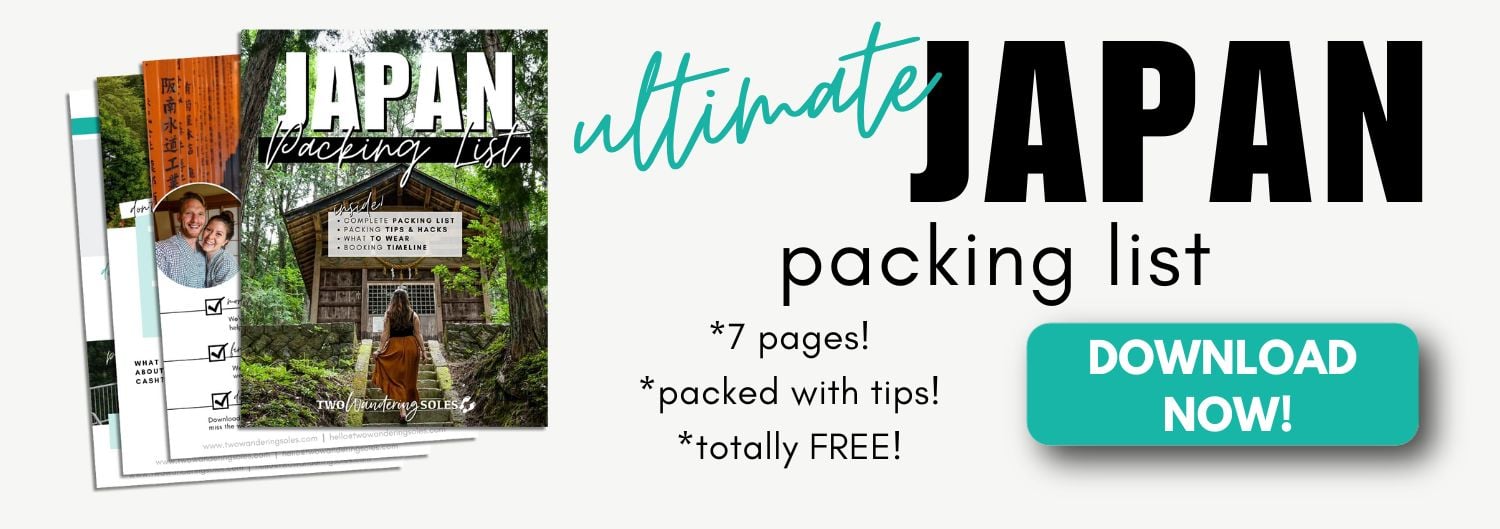
Plan your trip to Japan
After 3 trips (and counting!), we’ve fallen head over heels for Japan—and we’ve created TONS of resources to help you plan your dream trip. Start with our Ultimate Japan Travel Guide and be sure to check out these helpful articles:
- First time? Our Japan Trip Planner walks you through everything you need to know.
- Here’s our curated list of the best things to do in Japan—from iconic sights to once-in-a-lifetime experiences.
- Not sure where to go? Our Japan itinerary ideas will help you map it all out.
- Foodies, rejoice! This guide to what to eat in Japan will have you drooling before you land.
- This guide to what to wear in Japan (and what not to wear) will help you blend in.
- Use our ultimate Japan Packing List to make sure you don’t forget anything.
- Before you go, brush up on these essential Japan travel tips (including major do’s and don’ts!).
- Avoid awkward moments by brushing up on Japanese etiquette.
Still have questions? Drop us a comment—we LOVE helping travelers plan unforgettable trips to Japan!
Perfect Japan itinerary
Want the perfect itinerary planned for you?

If you don’t have a ton of time to spend planning your Japan itinerary (or you just don’t find travel planning fun), we’ve got something you might be interested in…
We created the ultimate done-for-you Japan itinerary that is packed full of all sorts of tips we’ve gathered from 3 trips to Japan as well as literally hundreds of hours of research (no exaggeration).
We have both an off-the-beaten path route as well as a classic itinerary that hits the top attractions (perfect for your first visit to Japan!).
Don’t miss your chance to grab our Japan Pocket Guide!
This (totally FREE!) pocket guide is a condensed version of all the things you should know BEFORE & DURING your trip to Japan!
Just enter your email and we’ll immediately send our pocket guide straight to your inbox!
Save this article on Pinterest for later!
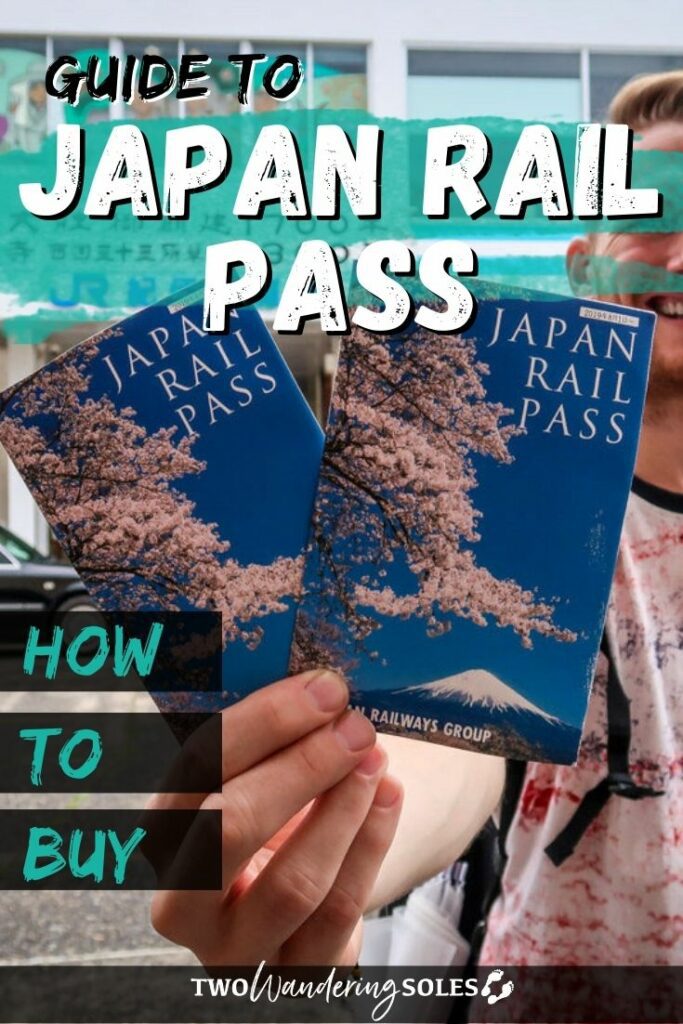

We want to hear from you!
Do you have any more questions about how the JR Pass works? Or where to buy the Japan Rail Pass? Are you confused about train travel in Japan? You’re not alone. And we are here to help. Let us know your questions below in the comments and we’ll try our best to answer them.




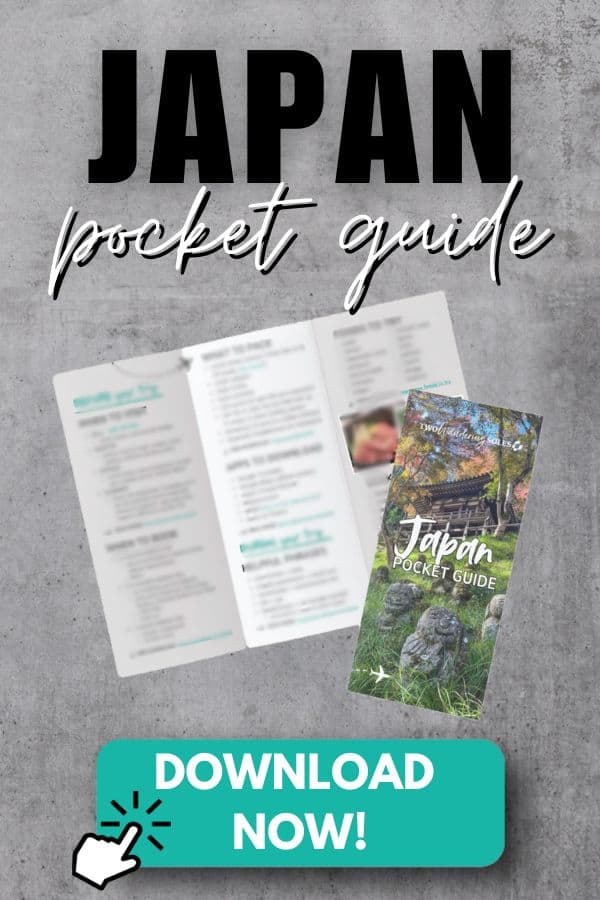
The rail pass will deliver you to popular tourist destinations, cheaply. Perhaps you like that idea. Not I.
If you wish to get, "off the beaten path," skip the rail pass.
The JRail Pass can also bring you to "off the beaten path" destinations around Japan. Free feel to check out our Japan page and all our Japan articles, and do note we were able to travel to most of those destinations because we had the JRail Pass.
What "off the beaten path" destination are you looking forward to traveling to in Japan?
You’re website answered a lot of my question. I do however have a question. We are traveling to Japan in April of this year for 10 days. I know the JR Pass are 7 – 14 -21 . We will be in Tokyo for 3 day and then off to Kyoto for 4 days then Osaka for another 4 days. Based from I have read would JR Pass be the best? Would we need another local ticket to from one place to the next or would the JR Pass suffice or we just get the local ticket and just buy a Bullet Train since the only long distance travel we would be making is from Tokyo – Kyoto?
Hi Lenny, Great question. Our general rule of thumb is if you are traveling to three or more cities, purchasing the Japan Rail Pass is a good idea.
For you, if you are traveling from Tokyo to Kyoto to Osaka, and then back to Tokyo to fly out, then you definitely should get the pass. If you are only going Tokyo-Kyoto-Osaka and flying out of Osaka, then it gets a little more complicated. The prices are still pretty comparable once you add in the transportation within each city without the pass (especially for Tokyo and Osaka, and getting to the airports).
Most of the time the JR Pass will suffice within the city, but you might have to get a refillable metro card if you want to go to a specific stop.
You can use Hyperdia or the Japan Official App to calculate the cost of buying each train/metro individually. Then compare that total to the 7-day Pass. My guess is it will come pretty close and any extra cost for the JR Pass will make up for the time of having to buy each individual ticket (and standing in line) at each station when you are in Japan. I hope this help!
Hi thanks for all the great tips in your website! We are planning our trip to Japan for a duration of 2 weeks. We will be in Tokyo for 5 days, Kyoto for 4 days, Osaka for 2 days, Hakone and back Tokyo. Is it worth getting the JR pass for this itinerary? Somewhere in your article I read you have to use the pass consecutively, so I got confused whether it will expire if we use it once the first day From airport, and not use it while in Tokyo until we’re traveling to Kyoto? does this expire the pass or we’re ok?
When or How is the JRpass activated? On the jrailpass website it only asks when you arrive. Is that the activation day? So, i want to buy a 7 day pass, but want to start using it 2 or 3 days after i arrive, because thats when ill be going to Kyoto and back to Tokyo.
Hey Chris, great question. You can start your pass whenever you want, it does not depend on your arrival date in Japan. Whenever you want to activate your 7-day pass, you have to go to a JR Ticket Counter and they can activate it for you.
Just a reminder, before you activate the pass you will have to pay individually for your train rides/metro around Tokyo.
Hi Ben, Thanks for all your help in understanding the Japan Rail system. This summer we will be visiting Sendai, Kyoto, Hakone and Tokyo and plan to heavily use the JR. When we arrive in Japan (Haneda) on Saturday afternoon we plan to immediately take the Shinkansen from Tokyo Station to Sendai. Is there a way to reserve seats on the train before arriving in Japan or we just hope for the best when we pick up the pass at the airport upon arrival? Thanks! Brian
Hi Brian, It sounds like you have a good route already planned out, which is great! I have never reserved seats online but I think you can for JR East lines. JRailPass has a short write-up about it if you search their page.
Otherwise, you can book your seats right when you arrive in Japan. There also be a non-reserved car if you are not able to book seats. I hope this helps.
Hi, you give details for the SUICA card for Tokyo and the ICOCA card for Osaka. Is there anything similar in Kyoto?
Thanks
David Myers
Hi David, the ICOCA Card can also be used (and refunded) in Kyoto, just like in Osaka. You can use the SUICA card in Kyoto as well, but you will not be able to get a refund there. Does this clear things up?
We just booked our flights to Tokyo for the 2020 Olympics and are going to have some time to explore Kyoto, Osaka, and Hiroshima. This has been an excellent resource thus far and has put some of the nerves at ease! Your walk-through of the process is exceptional. Thank you for the work you’ve put into this! Are you aware if the JR Pass will get us out to Hiroshima or will we need another option? Your insights are very much appreciated!
Hi Jason. Yes, the JR Pass connects you to Hiroshima station. You can travel for free between Kyoto, Osaka, and Hiroshima with the JR Pass. We do recommend you book your seats a few days before you want to travel to make sure you get a seat.
Once in Hiroshima, you will need to get a refillable metro card (like ICOCA card) to use the city trolleys. Let us know if you have any more questions!
This blog is so helpful! Thank you
You are very welcome, Gerard!
Hi!! I’m curious if you received a tracking number with your purchase from jrailpass.com thx
Hi Jackie, Yes we did receive a tracking number for our JR Pass order.
Hi! Your blog is amazing and very helpful!
We’re planning on purchase the JR Pass because we’re landing in Osaka then visiting Kyoto and Tokyo, does the JR Pass can be used to move inside the different cities? Like visiting different places in Tokyo?
Hi Karen,
Yes you can use the JR Pass to ride the JR Lines within Tokyo and Osaka. It’s really handy in those cities.
We do recommend getting a metro pass card (ICOCA for Osaka, Suica for Tokyo) because the JR lines don’t go to every stop. The JR Lines mainly do the big loops around each city (Osaka City Loop and the Yamanote Line in Tokyo)
I hope that helps!
How long did it take for your pass to actually arrive after ordering? While it says 24-48 hour shipping, I just ordered a pass and it took a day or two to accept payment and process the order. TripAdvisor has some pretty negative reviews of the website you linked, so was hoping to know more about your experience using the company you ordered from! I have a few friends joining me and we aren’t sure what the best company to order from is from a shipping/reliability standpoint?
Hey Lexi, Thanks for your comment. We fully trust JRailPass.com because we have personally used them twice now and have had great service both times.
On the Delivery section of their website it states that they try to process every order within the day, "however, the exact delivery time will depend on the customer’s location, time of order, public holidays as well as customs problems and/or ground/air transportation disruption."
Lots of factors at play as you can see. But the estimated maximum delivery time is 72 hours.
Please let me know if you have any more question!
I was impressed with your website and decided to buy the JRailpass thru you .
The Japan Rail pass , On the front page promises free FedEX delivery but at the end of the process they charge for the delivery.
So, what gives
Hope to hear from you
Benny
Hey Benny (great name btw). The free delivery applies to orders over $600 and to certain countries. I really hope this helps! Cheers!
I know this article is a couple of years old, but I’m hoping you’ll still respond! Did you ever have any issues of booking the actual train seats on the spot? Basically, should I be worries about space availability on certain days, and is there a way to book a seat ahead of time?
Hi SM, We personally did not have any issues with getting seats. Just book your tickets at the rail station a day or so in advance and you should be good. You could book it the same day, but they recommend booking ahead of time.
Hi!
I’ll be in the land of the rising sun next September. In the train, what about the luggage? I’ve been reading that there are some services that send your luggage to your next destination. But… can’t you get them on board on the trains?
Yes, you can bring your luggage on the trains with you. No need to ship them seperately.
This was such a helpful post. we are a family of four backpacking the world and are heading to Japan in three weeks. We worked out the cost of independent travel for us without the pass and it came to $3800 NZD. (Eeek…) With the passes, it will be $3045 NZD. Thats still hefty but is certainly a big saving. Thanks again!
Liz
Hey Liz, that’s a huge savings! Congrats! You can really save so much money with the Japan Rail Pass. Glad you found the article helpful. Hope you and your family have a great time in Japan.
Good morning!
My wife and I are traveling to Japan at the end of this month and using your travel as a guide. What is the easiest way to understand the train system? We have purchased our JR Pass, will fly into Osaka, stay in Kyoto for a few days, travel to Hakone and stay in Odawara, then we have Tokyo for a few days and back to Osaka at the end for a few more days. I would love some of your tips for understanding and making sure you take the correct routes please!
Hi Cory, I understand your confusion when it comes to train travel in Japan. You already did the right thing by purchasing the JR Pass. It’s the cheapest and easiest way to travel around Japan.
Your route sounds incredible (because it’s very similar to ours :). One of the best sites I have found to plan train travel before you arrive in Japan is call Hyperdia.
You can search trains between cities, departure times, arrival times and it gives you all the trains traveling that day. I used this a lot when planning our trip.
Another resource you can use is the helpful staff at the JR ticket counters once your in Japan. You have to book your tickets about a day in advance with them anyway, you can ask them what is the best way to get from one station to another.
If you want more information on the train routes, Japan Rail Pass site is also a good resource. We have a detailed article about the different bullet trains you can take:
I hope this helps!